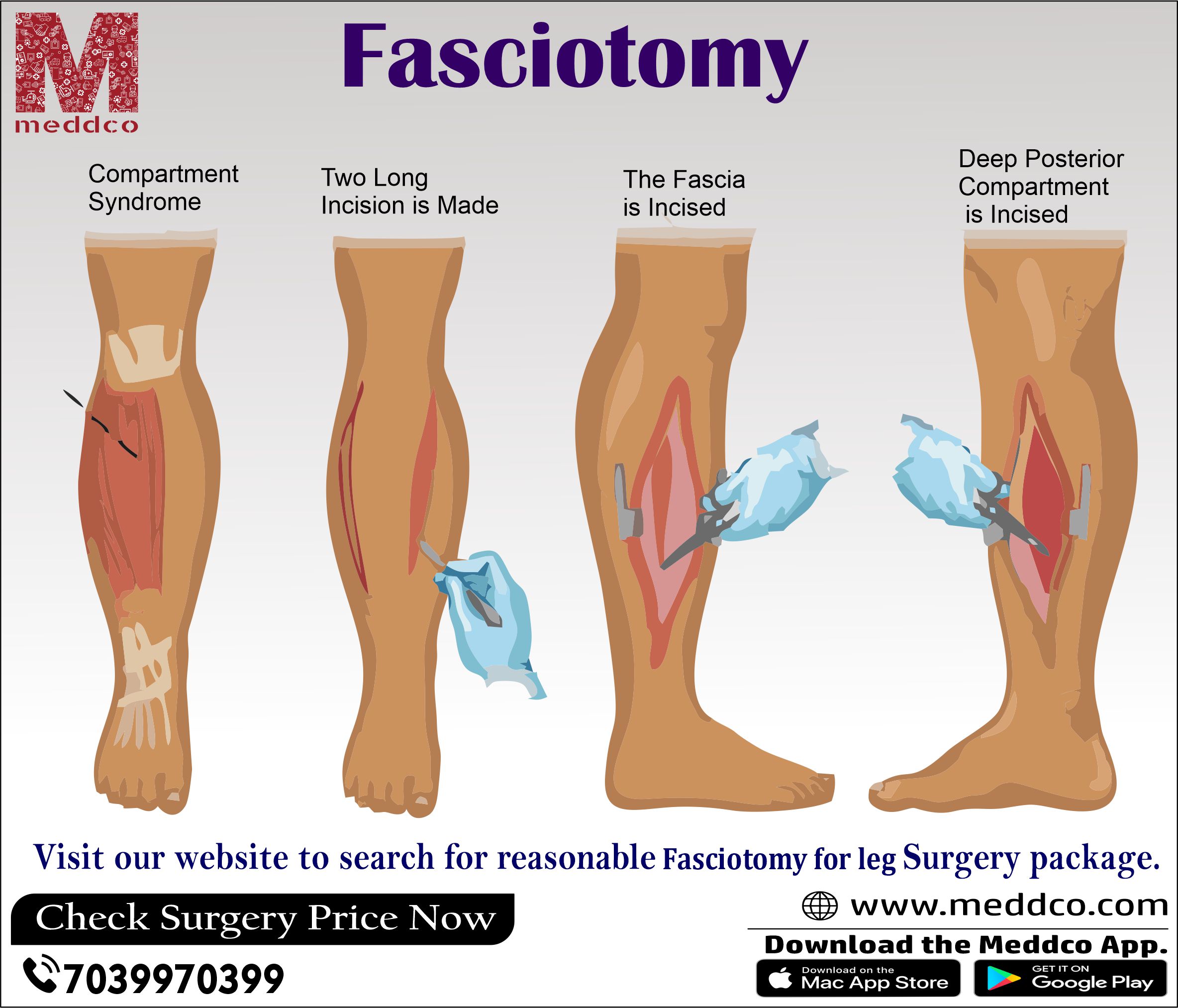

: Admin : 2022-05-13
A fasciotomy surgery is a procedure to cut open the fascia (tissue beneath the skin) to relieve tension or pressure. The muscles in your arms and legs are divided into muscle groups by thick bands of tissue called fascia. The fascia has some openings or compartments that contain muscle tissue, nerves, and blood vessels. Since the fascia is a closed space, whenever there is swelling due to the collection of fluids in the openings or compartments, the fascia is pushed against the muscles, nerves, or blood vessels in the arms and legs. This condition is called compartment syndrome.
High blood pressure can harm muscles and nerves and cause blood flow to be reduced. Acute compartment syndrome develops quickly, whereas chronic compartment syndrome develops over time (chronic compartment syndrome). In either case, compartment syndrome can lead to severe and permanent damage if left untreated. Emergency fasciotomy is often done for acute compartment syndrome. Compartment syndrome can occur at any site in the body. However, the leg is the most commonly affected body part. Other sites include the forearm, buttocks, hand, foot, arm, thigh, and back.
Reasons for Procedure
The compartments separate the muscles, nerves, and blood vessels. Fascia is a strong sheet of tissue that wraps around the compartments. Swelling or fluid buildup in the compartment can increase pressure. This can cause nerve damage by slowing or blocking blood flow in the area. The loss of blood flow can also result in tissue death in the affected area. The pressure can also cause painful tissue compression, including nerve compression.
Fasciotomy is used to relieve pressure in these compartments immediately. Releasing the pressure will improve blood flow and prevent or slow tissue damage. It can be used to treat the following conditions:
Acute compartment syndrome is a dangerous increase in pressure that occurs suddenly. Trauma or an accident are common causes.
Pressure that builds slowly and recurs in chronic compartment syndrome. If other treatments fail, fasciotomy may be used.
Possible Complications
Although complications from the procedure are uncommon, all procedures carry some risk. Your doctor will examine potential issues such as:
Talk to your doctor before your procedure about how to manage factors that may increase your risk of complications, such as:
What to Expect Prior to Procedure?
Anesthesia
Description of the Procedure
Depending on the part of the body and severity, a fasciotomy may be performed differently.
In general, the procedure for a leg or arm is the same. Over the compartments, a single incision will be made in the skin. Between two joints, the incision will run the length of the limb. The fascia is then cut to the same length just beneath the skin. If there is any dead tissue present, it will be removed.
The wound will be covered with loose stitching, but the wound will remain open. Once the swelling has subsided, the doctor will gradually close the wound.
Until the wound is closed, the area will be wrapped in a dressing. The wound will be monitored with frequent trips to the operating room to have:
How Long Will It Take?
The length of the procedure will depend on how much damage.Anesthesia will prevent pain during surgery. Pain and discomfort after the procedure can be managed with medications.
Average Hospital Stay
You may be in the hospital for up to 3 days. If you have any problems, you may need to stay longer.
fasciotomy surgery muscles
No Comments